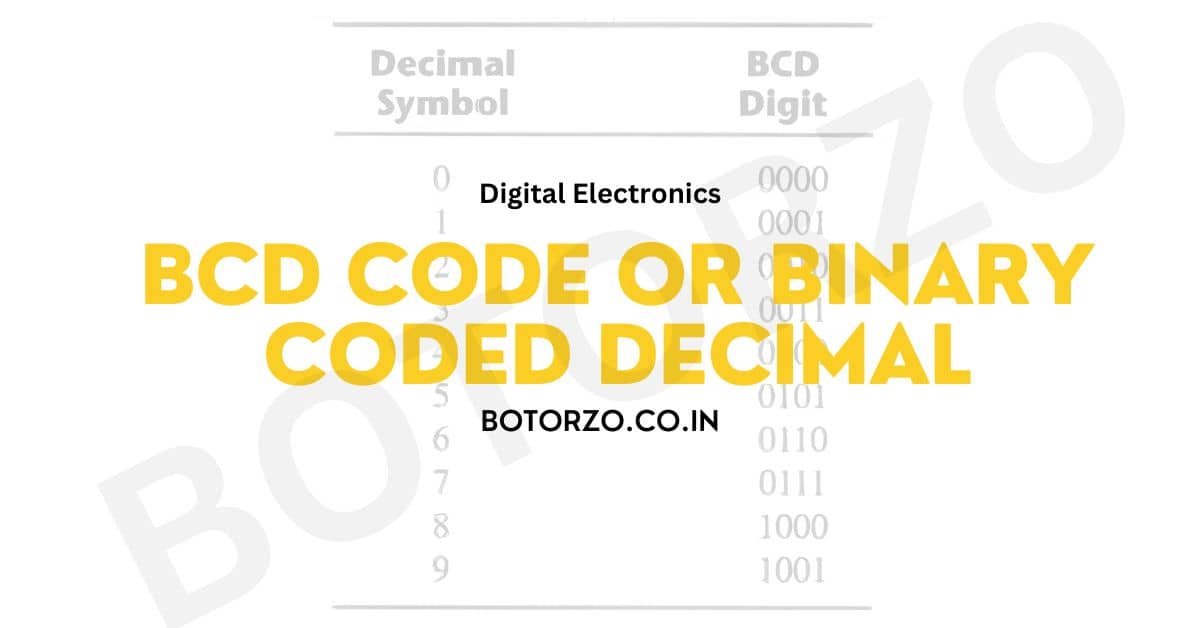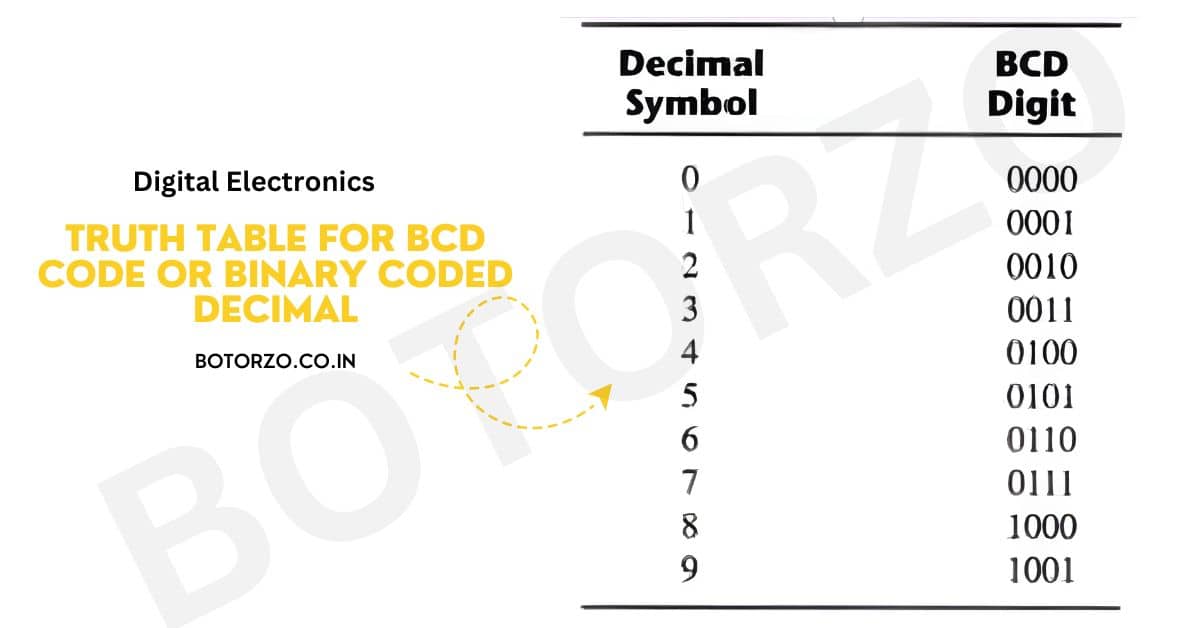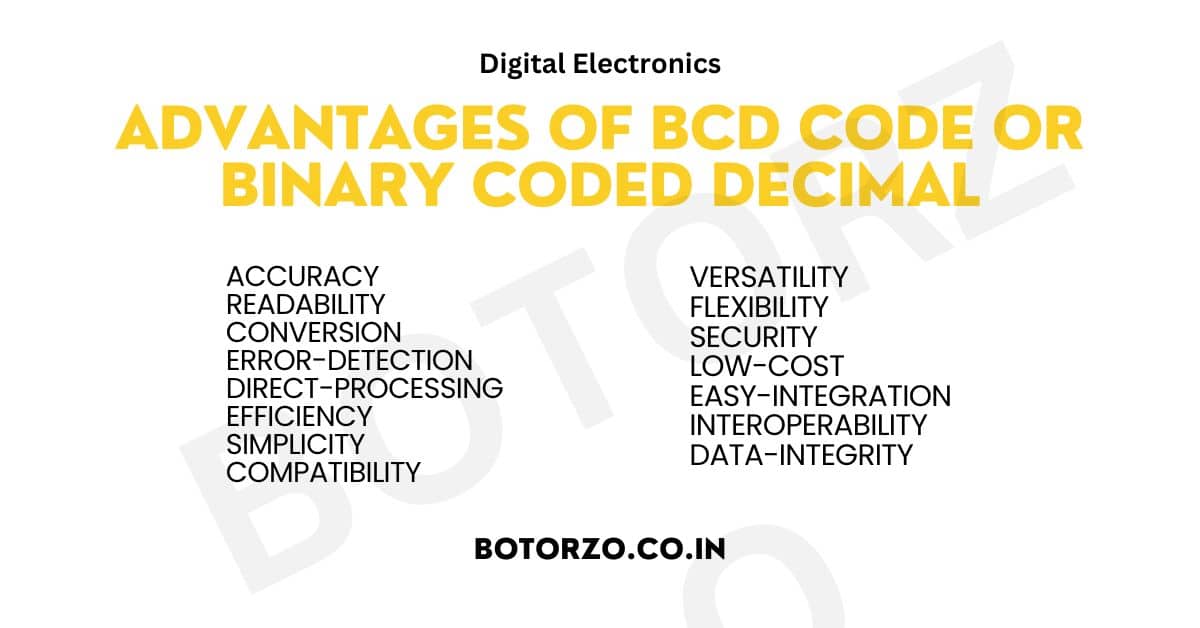
In today’s article, we will read about BCD code which is the binary coded decimal. Although a computer operates best using the binary number system, most humans are more familiar with the decimal system. Converting decimal values to binary, doing all arithmetic operations in binary, and then converting the binary outputs back to decimal is one technique to fix this problem.
In order to convert decimal integers to binary using this approach, we must first save them in the computer, because only binary values can be accepted by the computer. We must use a code that contains 1’s and 0’s to represent the decimal digits. When decimal numbers are stored in a computer in coded form, it is also feasible to execute arithmetic operations directly on them.
If we use BCD code or binary coded decimal in any system then it will be easy to store it because, at the time of conversion, we can represent any digit within a system.
Binary Coded Decimal
The idea of expressing decimal digits with binary digits is the basis of the BCD code’s theoretical foundations. Each decimal digit in BCD coding is represented by a 4-bit binary code.
For instance, the decimal digits 0 and 1 are represented as 0000, 0001, and so on up to 9, which is represented as 1001.
If the total number of elements in the set is not a multiple of 2, binary data will contain some unassigned bit combinations. Such a set is formed by the ten decimal digits. A binary code that differentiates between ten elements must have at least four bits.
Yet, 6 of the 16 possible combinations remain unassigned. By organizing four bits into ten different combinations, different binary codes may be created.
The straight binary distribution shown below image is the most widely used code for decimal digits. This technique is known as binary-coded-decimal, or BCD for short. Various decimal codes are possible, and a few of them are discussed further below.
Truth Table For BCD Code or binary coded decimal

| Decimal Symbol | BCD Digit |
|---|---|
| 0 | 0000 |
| 1 | 0001 |
| 2 | 0010 |
| 3 | 0011 |
| 4 | 0100 |
| 5 | 0101 |
| 6 | 0110 |
| 7 | 0111 |
| 8 | 1000 |
| 9 | 1001 |
Advantages of BCD code or binary coded decimal
Binary code is used to represent decimal integers in BCD (Binary Coded Decimal) coding. A four-bit binary code represents each decimal digit. BCD code is simple to employ in electronic circuits, especially in digital circuits that do arithmetic operations, which is one of its key benefits.

Here are some advantages of BCD code:
- Accuracy
- Readability
- Conversion
- Error-detection
- Direct-processing
- Efficiency
- Simplicity
- Compatibility
- Versatility
- Flexibility
- Security
- Low-cost
- Easy-integration
- Interoperability
- Data-integrity
Accurate representation of decimals: BCD coding enables accurate depiction of decimal values. The four-bit binary representation of each decimal digit makes it simple for digital circuitry to execute mathematical operations on decimal quantities.
Convertibility: Gray, hexadecimal, and binary codes may all be converted to BCD code with ease. This makes interacting with other digital circuits that employ other codes simple.
Binary-to-decimal conversion is not required, which saves time and reduces the possibility of mistakes. BCD coding does this. Digital circuits can directly process decimal numbers when they are encoded in BCD code.
BCD coding is simple for humans to read and comprehend. It is simple to visually analyze and verify data since every decimal digit is represented by a different binary code.
BCD coding has an error detection system built in that can find mistakes brought on by incorrect decimal digits or incorrect codes. This guarantees the dependability and integrity of data in digital systems.
Overall, BCD code is a useful coding scheme for digital circuits that need to process decimal numbers. Its accuracy, ease of use, and error detection capabilities make it a valuable tool in many applications.
The BCD value has 12 bits to encode the decimal value’s characters. Yet, the comparable binary number requires just 8 bits. It is evident that a BCD number requires more bits than its equal binary value. Yet, there is a disadvantage to using decimal numbers since people who utilize the decimal system create computer input and output data.
It is essential to know that BCD numbers are decimal numbers, not binary numbers. despite the fact that they utilize bits in their representation. The main difference between a decimal number and a BCD number is that decimal numbers are written with the numbers 0 to 9 and BCD numbers employ the binary code 0000, 0001, 00 10. The decimal value is the exact same. Decimal 10 is represented in BCD with eight-bit values as 00010000, and decimal 15 is represented as 00010101. The comparable binary values… are 1010 and 1111, both of which have just four bits.
Frequently Asked Questions On BCD Code
What is BCD code?
BCD stands for Binary Coded Decimal, represented by its four-bit binary equivalent.
What are the advantages of BCD code?
Accuracy
Readability
Conversion
Error-detection
Direct-processing
Efficiency
Simplicity
How is BCD code used in computing?
BCD-code is used in computing to represent decimal numbers in digital circuits and systems
What are the limitations of BCD?
The main limitation of BCD-code is that it is not as efficient as pure binary code in terms of storage and processing speed
Our Another Domains Vidyapedia.in And Uietmdu.in
